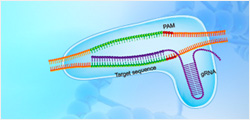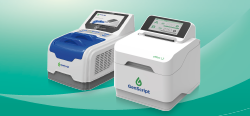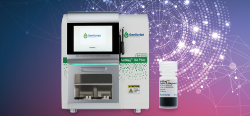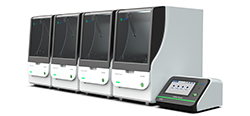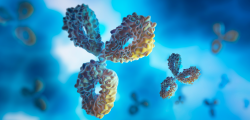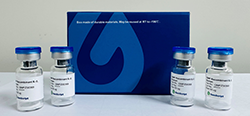| Specificity |
GenScript Rabbit Anti-Tau (Phospho-Thr217) Polyclonal Antibody detects endogenous levels of Tau only when phosphorylated at threonine 217. |
| Host Species |
Rabbit |
| Immunogen |
Synthetic phospho-peptide (KLH-coupled) corresponding to residues surrounding Thr217 of human Tau |
| Species Reactivity |
Human, mouse, and rat |
| Conjugate |
Unconjugated |
|
Working concentrations for specific applications should be determined by the investigator.The appropriate concentrations may be affected by secondary antibody affinity, antigen concentration, the sensitivity of the method of detection, temperature, the length of the incubations, and other factors.The suitability of this antibody for applications other than those listed below has not been determined.The following concentration ranges are recommended starting points for this product. |
| Application |
Recommended Usage |
| ELISA |
0.05-0.2 µg/ml |
| Western Blot |
0.1-1.0 µg/ml |
|
| Form |
Liquid |
| Storage Buffer |
1×PBS, pH 7.4, containing 30% glycerol and 0.02% sodium azide |
| Concentration |
0.5 mg/ml |
| Storage Instructions |
The product remains stable for up to 1 year at -20 °C from the date of receipt. The antibody is stable for 2-3 weeks if stored at 2-8°C. For long term storage, aliquot and store at -20°C or below. Avoid repeated freezing and thawing cycles. |
| Purification |
Affinity chromatography |
| Isotype |
Rabbit IgG |
| Clonality |
Polyclonal |
| Clone ID |
Not applicable |
| Note |
Small volume of antibody will occasionally become entrapped in the cap of the vial during shipment and storage.Before use, centrifuge the vial briefly to bring down any liquid in the cap. |
| Target Background |
Tau is a microtubule-associated phosphoprotein (MAP), localized in neuronal axons. It promotes tubulin polymerization and stabilizes microtubules. Tau proteins constitute a family of six isoforms, which range from 352 to 441 amino acids. The tau variants differ from each other by the presence of either three or four repeat-regions in the carboxy-terminal part of the molecule and the absence or presence of one or two inserts in the amino-terminal part.Tau is hyperphosphorylated by ERK, GSK-3, TPKII, and CDK5. At least thirty phosphorylation sites have been described, including Thr39, Ser46, Thr50, Thr69, Thr153, Thr175, Thr181, Ser198, Ser199, Ser202, Thr205, Ser208, Ser210, Thr212, Ser214, Thr217, Thr231, Ser235, Ser237, Ser241, Ser262, Ser285, Ser305, Ser324, Ser352, Ser356, Ser396, Ser400, Thr403, Ser404, Ser409, Ser412, Ser413, Ser416, and Ser422. Specifically, TPKII phosphorylates serines 202 and 404. GSK-3β transfection phosphorylates serines 199, 202, 235, 396, 404 and 413, and threonines 205 and 231. These sites are among the major abnormal phosphorylation sites of Tau. Phosphorylation on these sites reduces the ability of a given Tau species to promote microtubule self-assembly. Hyperphosphorylated Tau is the major protein of the paired helical filaments (PHFs), which make up the pathological neurofibrillary tangles of Alzheimer’s disease (AD). These PHFs are also found in the lesions of other central nervous system disorders.GenScript Rabbit Anti-Tau (Phospho-Thr217) Polyclonal Antibody is developed in rabbit using a synthetic phospho-peptide (KLH-coupled) corresponding to residues surrounding Thr217 of human Tau. |
| Synonyms |
Rabbit Anti-Tau (Phospho-Thr217) pAb; |
For laboratory research use only. Direct human use, including taking orally and injection and clinical use are forbidden.





